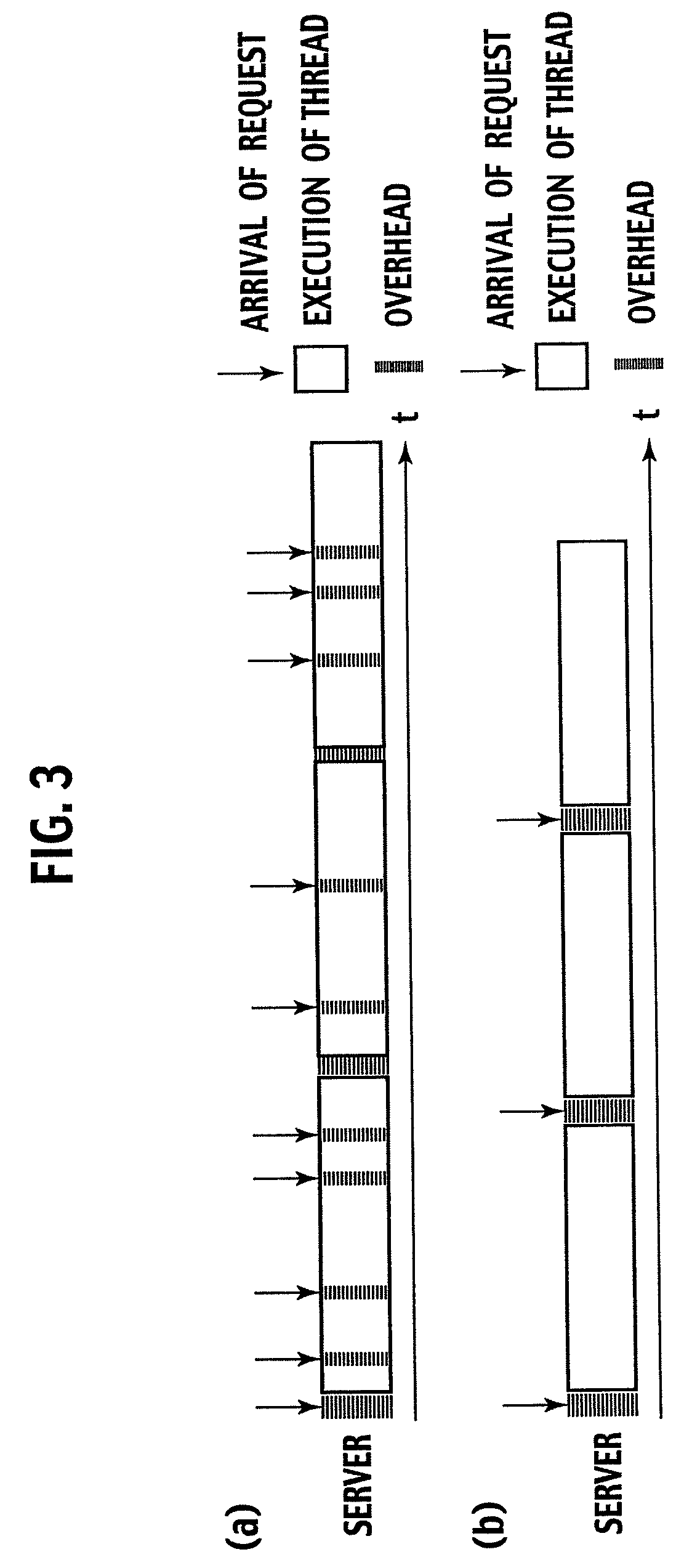Load Control Device and Method Thereof
a control device and load technology, applied in the field of scheduling requests, can solve the problems of high volume of meaningless, difficulty in reducing and the inability to process extremely high traffic, so as to reduce the load of the device manager and avoid the performance degradation of the server
- Summary
- Abstract
- Description
- Claims
- Application Information
AI Technical Summary
Benefits of technology
Problems solved by technology
Method used
Image
Examples
first embodiment
[0088]A first embodiment of the present invention will be described with reference to the drawings.
[0089]FIG. 5 is a block diagram showing the first embodiment of the present invention. The present invention comprises clients 1-1 to 1-n that issue requests, a server 4 that returns a response corresponding to a request, and a load control device 3 that relays requests and responses. The server 4 may be a software module such as Apache or may be a hardware module whose physical resources such as a CPU and a memory are independent of the load control device 3. This load control device 3 may be connected to two or more servers 4 to allow one load control device 3 to control the load of multiple servers 4. In addition, the load control device 3 may be created by extending the existing technologies, such as a reverse proxy, a Web accelerator, a Firewall, and a load balancer. The load control device 3 monitors the number of requests which are already sent to the server 4 but to which respo...
second embodiment
[0169]Next, a second embodiment will be described in which TCP / IP (Transfer Control Protocol / Internet Protocol) widely used on the Internet is used as the protocol for sending and receiving requests and responses. FIG. 10 is a block diagram showing the second embodiment of the present invention. This embodiment comprises clients 1-1 to 1-n that issue requests, a server 4 that returns a response corresponding to a request, and a load control device 3 that relays requests and responses. The load control device 3 may be created by extending the existing technologies, such as a reverse Proxy, a Web accelerator, a Firewall, and a load balancer.
[0170]A load control system in this embodiment comprises the following seven functional blocks.
[0171]Request receiving unit 30
[0172]Request sending unit 32
[0173]Response receiving unit 34
[0174]Response sending unit 33
[0175]Scheduling unit 31
[0176]The request receiving unit 30 sends a request, received from the clients 1-1 to 1-n, to the scheduling ...
PUM
 Login to View More
Login to View More Abstract
Description
Claims
Application Information
 Login to View More
Login to View More - R&D
- Intellectual Property
- Life Sciences
- Materials
- Tech Scout
- Unparalleled Data Quality
- Higher Quality Content
- 60% Fewer Hallucinations
Browse by: Latest US Patents, China's latest patents, Technical Efficacy Thesaurus, Application Domain, Technology Topic, Popular Technical Reports.
© 2025 PatSnap. All rights reserved.Legal|Privacy policy|Modern Slavery Act Transparency Statement|Sitemap|About US| Contact US: help@patsnap.com



